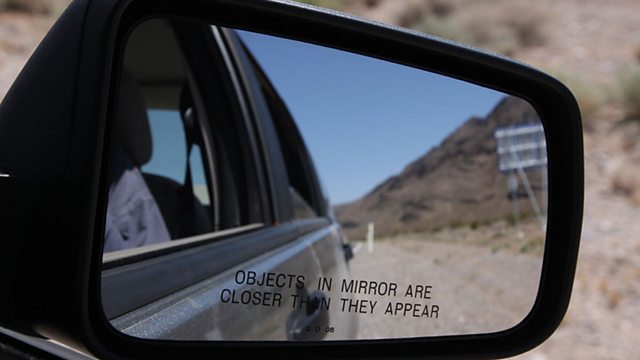Driverless Cars
Most traffic accidents are caused by human error, but would we accept driverless vehicles that communicate with each other and with the roads to prevent collisions happening?
Most traffic accidents are caused by human error. Engineers are designing vehicles with built in sensors that send messages to other cars, trucks, bikes and even pedestrians, to prevent collisions happening. The idea is to make the vehicles react to whatever's going on faster than the human drivers.
Jack Stewart drives around the university town of Ann Arbor, in Michigan, in some of the many vehicles that are fitted with experimental devices in the world's largest connected vehicles project. He finds out how the system works from researchers at UMTRI, the University of Michigan's Transportation Research Institute, including the director, professor Peter Sweatman and human factors expert Dr Jim Sayer, Kirk Steudle, Director, Michigan Department of Transportation and a resident who has had her car fitted with an experimental device.
(Photo: Right hand wing mirror, Nevada, USA, Βι¶ΉΤΌΕΔ copyright)
Last on
Broadcasts
- Mon 9 Jun 2014 18:32GMTΒι¶ΉΤΌΕΔ World Service Online
- Tue 10 Jun 2014 01:32GMTΒι¶ΉΤΌΕΔ World Service Online
- Tue 10 Jun 2014 08:32GMTΒι¶ΉΤΌΕΔ World Service Online
- Sun 15 Jun 2014 23:32GMTΒι¶ΉΤΌΕΔ World Service Online
Space
The eclipses, spacecraft and astronauts changing our view of the Universe
The Curious Cases of Rutherford and Fry
Podcast
-
![]()
Discovery
Explorations in the world of science.



